
May 13, 2016, Friday — In the Footsteps of Pope Benedict XVI…
Blessed Feast Day of Our Lady of Fatima…
“In terms of what we today can discover in this message [the message of Fatima], attacks against the Pope or the Church don’t come just from outside the Church. The suffering of the Church also comes from within the Church, because sin exists in the Church. This, too, has always been known, but today we see it in a really terrifying way.” —Emeritus Pope Benedict XVI, May 12, 2011, traveling on his airplane to the Shrine of Our Lady in Fatima, Portugal, which he visited on May 13, 2012 (link)
“The Pope [John Paul II] is our enemy… Due to his uncommon skills and great sense of humor he is dangerous, because he charms everyone, especially journalists. Besides, he goes for cheap gestures in his relations with the crowd, for instance, [he] puts on a highlander’s hat, shakes all hands, kisses children, etc… It is modeled on American presidential campaigns… Because of the activities of the Church in Poland our activities designed to atheize the youth not only cannot diminish but must intensely develop… In this respect all means are allowed and we cannot afford sentiments.” —A memorandum sent out by the Polish Communist Party to the schoolteachers of Poland to counteract what it knew would be the destabilizing impact of the visit that Pope John Paul announced he would make to Poland shortly after he was elected Pope on October 16, 1978, published in a 2005 article by David Remnick, editor of The New Yorker since 1998 and a staff writer since 1992 (link)
“’To save souls’ has emerged as the key word of the first and second parts of the ‘secret,’ and the key word of this third part is the threefold cry: ‘Penance, Penance, Penance!’ The beginning of the Gospel comes to mind: ‘Repent and believe the Good News‘ (Mk 1:15). To understand the signs of the times means to accept the urgency of penance — of conversion — of faith. This is the correct response to this moment of history, characterized by the grave perils outlined in the images that follow. Allow me to add here a personal recollection: in a conversation with me Sister Lucia said that it appeared ever more clearly to her that the purpose of all the apparitions was to help people to grow more and more in faith, hope and love — everything else was intended to lead to this.” — Cardinal Joseph Ratzinger, later Pope Benedict XVI, in his official interpretation of the “Third Secret” of Fatima, released on June 26, 2001 (link)
Feast of Our Lady of Fatima
Today we celebrate the Feast of Our Lady of Fatima. On this day in 1917 — 99 years ago (next year will be the 100th anniversary) — Our Lady made her first appearance to three shepherd children, Jacinta (age 7), Francisco (age 9) and Lucia (age 10), at Fatima in Portugal.
She appeared to them once a month from May through October (except when they were prevented and held in jail on August 13, and the appearance came instead on August 19).
After a lecture at St. Peter’s Church in New York City on January 27, 1988, the following request was made of Cardinal Joseph Ratzinger, later Pope Benedict XVI, now Emeritus Pope Benedict XVI: “Your Eminence, I would like you to ask the Holy Father, Pope John Paul II, to consecrate Russia to the Immaculate Heart of Mary, immediately and in union with all the bishops in the world.” He replied: “I know it has to be done!” (link)
“Our Lady predicted that God would work a great miracle on October 13, 1917 to prove the authenticity of the apparitions. A tremendous prodigy happened on that day just as Our Lady had promised. For four minutes, the noontime sun spun around giving off various colors, one after the other. If a person at Fatima that day had on a white shirt — it would turn red, green and blue as the sun spun around. It stopped and started again for four more minutes, this time giving off even more beautiful colors. Then it stopped again. Then it started again. This time it detached itself from its regular position and began to zigzag in the sky. It ‘danced’ for about four minutes, then started to plummet to the earth. It looked like it was the end of the world. Many people fell on their knees to ask for mercy of God. The sun then returned to its original position in the sky. It was witnessed by over 70,000 people who all, both believers and unbelievers, came away acknowledging that a great miracle had occurred. Several learned men present testified: ‘I have seen it but I cannot explain it.'” (link)
Today is also the anniversary of the day in 1981 — 35 years ago — that an attempt was made on the life of Pope John Paul II.
Doctors say that the attempt, carried out by a Turkish member of the right-wing “Grey Wolves” group, Ali Agca (photo below) nearly took the Pope’s life (released from prison in Turkey in 2010, Agca is still alive today).
Pope John Paul attributed his avoidance of death to the “maternal hand” of the Virgin Mary, saying that she had guided the bullet away from an artery. An inch or less difference, and he would have lost his life.
“Why aren’t you dead?”
“On December 27, 1983, as John Paul II sat in a bare, whitewashed jail cell of Rome’s Rebibbia prison, he was unprepared for the question voiced by an unshaven prisoner to his side, ‘So why aren’t you dead?’ Death had appeared all but certain to bystanders when three bullets fired by Turkish gunman Mehmet Ali Agca tore through the Pope’s flesh on May 13, 1981, staining the pope’s white cassock with deathly scarlet. Ali Agca was a professional assassin, he had aimed at close range, and he had aimed well. But somehow, the bullets missed lethal targets, one grazing the pope’s right elbow, and another deflecting off his left index finger before passing through his abdomen, a fraction of an inch from a major artery. By John Paul II’s assessment, ‘It was a mother’s hand that guided the bullet’s path,’ and permitted that ‘the dying Pope stopped on the threshold of death.’ The assassination attempt had taken place on the feast of Our Lady of Fatima, and the Pope had no doubt that his survival was due to the intervention of the Blessed Virgin Mary.” (link)
Later, in November, 2006, when Pope Benedict traveled to Turkey not long after his September 12, 2006, University of Regensburg address which stirred up so much controversy in the Islamic world, Agca, then in prison, told reporters that Benedict’s life as well would be in danger in Turkey.
Benedict, undeterred, did not cancel the Turkey trip, but for this reason, during that trip, he is said to have worn a bullet-proof vest beneath his papal robes. (link) However, other reports say he was advised to wear a bullet-proof vest, along with his five accompanying cardinals, but that he categorically refused to follow the suggestion. “A Vatican source said: ‘Security staff suggested to the Holy Father that for safety’s sake he should consider wearing a bullet proof vest but he dismissed the idea immediately. The five cardinals accompanying him on the visit were advised to wear one but have also dismissed the idea. The protection teams are worried and are bringing in extra agents to look after him.'” (link)
Join me in Rome and Germany for a very special pilgrimage,
“In the Footsteps of Pope Benedict”
Latest on Amoris Laetitia, Diaconate, Finances, Gender and Immigration
First, a new intervention from Cardinal Gerhard Mueller is being noted around the world. Here are excerpts:
“The waters of the flood, for their part, speak to us of the fluid relationships of postmodernity, devoid of form and always unstable, that start over time after time in multiple disconnected unions…” —Cardinal Gerhard Mueller, Prefect of the Congregation for the doctrine of the Faith (and so the highest doctrinal authority in the Church after Pope Francis), in a May 4 talk in Oviedo, Spain which was published by Italian Vaticanist Sandro Magister on May 11 (link and link). Mueller was received in audience by Pope Francis this morning in Rome, but there has been no report on the content of their meeting
“The basic principle is that no one can truly desire a sacrament, that of the Eucharist, without also desiring to live in accord with the other sacraments, including that of marriage.” —Cardinal Mueller, May 4 talk in Oviedo
“In the waters of fluid modernity, the Church can offer a hope to all families and to all of society, like Noah’s ark. She recognizes the weakness and need for conversion of her members. Precisely for this reason she is called to maintain, at the same time, the concrete presence in her of the love of Jesus, living and active in the sacraments, which give the ark its structure and dynamism, making it able to plough through the waters.” —Cardinal Mueller, ibid.
So in recent days a lot has been happening, as many of you well know.
(1) Marriage: The debate over Amoris Laetitia continues.
(2) Diaconate: The Pope has suggested that he will constitute a commission to consider the question of opening the diaconate to women. (link)
(3) Money: There are controversies regarding the “external audit” of the Vatican’s finances sought by Australian Cardinal George Pell, which two weeks ago was unceremoniously halted by the Secretariat of State. (link)
(4) Gender: And the ever-expanding scope of the battle over “gender ideology” continues to have new consequences in the Western world. In the United States, the Obama administration today issued “a sweeping directive telling every public school district in the country to allow transgender students to use the bathrooms that match their gender identity.” The directive “does not have the force of law, but it contains an implicit threat: Schools that do not abide by the Obama administration’s interpretation of the law could face lawsuits or a loss of federal aid.” (link)
Evidently, the administration foresees an ever-growing number of students changing their gender identities: “As soon as a child’s parent or legal guardian asserts a gender identity for the student that ‘differs from previous representations or records,’ the letter says, the child is to be treated accordingly — without any requirement for a medical diagnosis or birth certificate to be produced,” The New York Times wrote yesterday. (link)
How this can be is another subject for further study, reflection and analysis.
(5) Immigration. Europe now confronts another summer of massive immigration from Africa and the Midle East, much of it of members of the Muslim faith. Many are debating the best and most moral way to face this economic, social, cultural, political, challenge, and Pope Francis has been in the forefront asking the Europeans to be hospitable to the migrants/refugees.
An interesting first step toward an appreciation of the issues may be found in a new article by Prof. John Betz of Notre Dame in the United States. He discusses the influence of the German-Polish Jesuit, Fr. Erich Przywara (1889-1972), on the thought of Pope Francis.
“For Przywara,” Betz writes, “the real idea of Europe is one that is open to the East. Europe has always been a crossroads, and its cultural development is unthinkable apart from what it has received—not only from ancient Greece (e.g., from Plato and Aristotle), but more importantly, as far as its Christian roots are concerned, from Asia Minor and Africa. And in this regard Przywara makes special mention of the North African theologies of Tertullian, Augustine, and Origen. An authentically European culture, therefore, will not be closed in on itself, but will actively go forth in dialogue. Indeed, to reiterate the thesis of the eminent French philosopher Rémi Brague, one could say that European culture, to the extent that it has been formed by Christianity, is a fundamentally ‘eccentric culture.’ And so Przywara argues that the West should not be conceived in dialectical opposition to the East, but in fruitful dialogue with it. (link)
The entire article — and the comment page — is worth reading.
More on all these matters in future letters.
For now, a brief remark on the Amoris Laetitia debate, and then a special invitation to an extraordinary pilgrimage…
Cardinal Gerhard Mueller, Prefect of the Congregation for the Doctrine of the Faith (and general editor of the collected works of Joseph Ratzinger-Emeritus Pope Benedict), has now weighed in on Amoris Laetitia.
In early May, Mueller was in Spain, giving important talks in Madrid and Oviedo.
In both places, he argued strongly that Amoris Laetitia does not change Church teaching on the reception of Communion by married, divorced and “remarried” Catholics.
He was received this morning by Pope Francis, but no report on the content of their discussion has been made public.
“In the Footsteps of Pope Benedict”
Announcing a Special Pilgrimage
“The new Pope knows that his task is to make the light of Christ shine before men and women of world — not his own light, but that of Christ.” —Emeritus Pope Benedict XVI, speaking about himself shortly after becoming Pope in 2005 (in the photo below, he is on the upper right as a young priest)
“My mother was very warm-hearted and had great inner strength; my father was more markedly rationalistic and deliberate. He was a reflective believer. He always understood clearly at the outset what was going on and always had an astonishingly accurate judgment. When Hitler came to power he said: There’s going to be war…” —Emeritus Pope Benedict XVI, reflecting on his childhood in Germany in the 1920s and 1930s (link)
(In this family photo, in the back row are Fr. Georg (left, the future Pope’s brother, now 92) and Fr. Joseph Ratzinger (right, the future Pope, now 89); in the foreground, his sister Maria Ratzinger, who died in 1991 (she was his housekeeper, and her death was very hard for him to take) and his parents, Maria and Joseph Sr.)
“With an eye to his retirement, my father bought an old, likewise very simple farmhouse in Hufschlag near Traunstein. Instead of tap water, there was a well, which was very picturesque. On one side of the house there was an oak forest interspersed with beeches, on the other side were the mountains, and when we opened our eyes in the morning, the first thing we could see was the mountains. In the front we had apple trees, plum trees, and a lot of flowers that my mother had cultivated in the garden.” —Ibid.
“From the very beginning — it was exactly the same for my brother and sister, I think — I had a lot of interest in the liturgy. My parents had already bought me my first missal when I was in the second grade. It was actually terribly exciting to penetrate into the mysterious world of the Latin liturgy and to find out what was actually happening, what it meant, what was being said. And so then we progressed by degrees from a children’s missal to a more complete missal, to the complete version. That was a kind of voyage of discovery.” —Ibid.
“When later Cardinal Faulhaber paid a visit to our region, with his imposing purple, he impressed me all the more, so that I said, I would like to become something like that.” —Ibid.
“In the six years of theological study one encounters so many human problems and questions. Is celibacy right for me? Is being a parish priest right for me? Those were indeed questions not always easy to deal with. I always had the basic direction before me, but there was no lack of crises.” —Ibid
An Extraordinary Pilgrimage
I’m writing to invite you to join our first Inside the Vatican Signature Pilgrimage to Rome and Germany “In the Footsteps of Emeritus Pope Benedict XVI” from June 26 until July 6, 2016.

This pilgrimage will be in search of the wellsprings of Benedict’s thought and action, and will also be in honor of him, for it will begin on the 65th anniversary of his priestly ordination.
Benedict was ordained a priest on June 29, 1951, at the age of 24, together with his older brother, Monsignor Georg Ratzinger, who is also still alive — they were both ordained at the same Mass.
Their 65th anniversary as priests falls on June 29. For this reason, the pilgrimage will begin in Rome, to be in Rome for that anniversary.
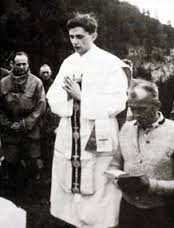
During our first three days, we will see some of the places in Rome which were most important to Pope Benedict, as Rome is Benedict’s second home. He has lived in the city since 1981 — for 35 years.
After visiting Rome and the Vatican, and talking with people in Rome who have long worked and lived with Emeritus Pope Benedict, we will turn our steps toward Germany, where he was born.
(Below, a view of Neuschwanstein Castle, Germany, which we will visit)
While on pilgrimage, we will be reading Benedict’s writings, studying them, and coming to understand better his mind and heart.
In particular, we will read Dominus Iesus (“The Lord Jesus,” published in the year 2000), a text he wrote at the request of Pope John Paul II.
In it, Benedict reaffirmed the central teaching of the uniqueness of Jesus Christ, that “salvation is found in no one else, for there is no other name under heaven given to men by which we must be saved.”
(A view of the Weltenburg monastery on the River Danube, which we will visit)
Day by day, we will explore the development of Benedict’s life and thought.

(Photo left, Father Joseph Ratzinger dressed in jacket and tie)
During his papacy, Benedict XVI advocated a return to Christian faith and sacramental life to counter the increased secularization of many Western countries.
He has said that relativism’s denial of objective truth, and the denial of moral truths in particular, is the central problem of our time.
He revived a number of traditions, including recognizing that the Tridentine Mass had never been abrogated.
He has always loved music, especially Mozart.
He has been described by some as “the main intellectual force in the Church” during the past half-century.
Through readings I am choosing, we will have a chance to glimpse the essence of his thought.
(Here, a view of the city of Regensburg, where the future Pope taught theology, and where his brother still lives today; we will visit the city as part of our pilgrimage)
After we leave Rome we will go from his “second home” to his “first home”: Bavaria, in southern Germany.
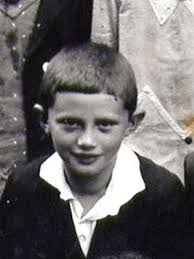
We will visit his birthplace (Marktl-am-Inn in southern Germany).
We will visit the little towns he lived in as a boy when his father, who was a policeman, was forced to move house to take new postings — all in Bavaria (Traunstein, Tittmoning, Aschau).
We will visit places he himself visited on pilgrimages with his mother, brother and sister, especially Altoetting, a Marian sanctuary that is one of the most beautiful places in the world, a place of peace and profound holiness.
We will visit the church where he was ordained 65 years ago.
We will visit the places where he taught as a university theologian, in Regensburg and in Munich.
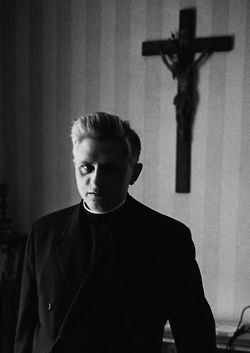
We hope to be able to talk with him about his younger brother and their life together over the decades — the two still spend several weeks each year together.
There may be few better ways to get to know the mind and heart of Pope Benedict than to join us on this pilgrimage.
(Left, Father Joseph Ratzinger as a young priest)
The trip will be a time of reading, reflection and prayer for all of us, visiting the places of Emeritus Pope Benedict, in early summer, where each place we will see will be more beautiful and peaceful than the last…
Please consider joining this very special pilgrimage “In the Footsteps of Emeritus Pope Benedict XVI.”
I hope you will join me on this profound spiritual journey.
Best wishes,
Robert Moynihan
Founder, Editor-in-Chief, Inside the Vatican magazine
Email now to receive our Information Packet
or to reserve your place!
Limited places available.
(Here, a meeting with then-Pope Benedict in 2010)
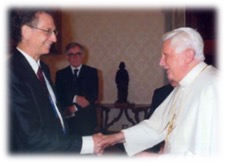
It will only take 11 days, and yet it will bring the entire life and work, mind and heart, of Pope Benedict into focus. I hope you will consider joining us!
Note: The Moynihan Letters go to some 20,000 people around the world. If you would like to subscribe, click here to sign up for free. Also, if you would like to subscribe to our print magazine, Inside the Vatican, please do so! It would support the old technology of print and paper, as well as this newsflash. Click here.
What is the glory of God?
“The glory of God is man alive; but the life of man is the vision of God.” —St. Irenaeus of Lyons, in the territory of France, in his great work Against All Heresies, written c. 180 A.D.


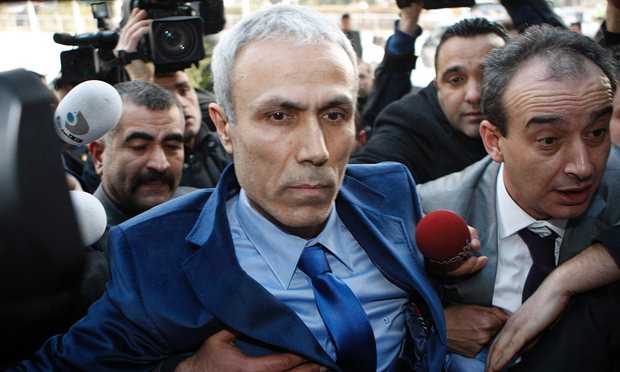
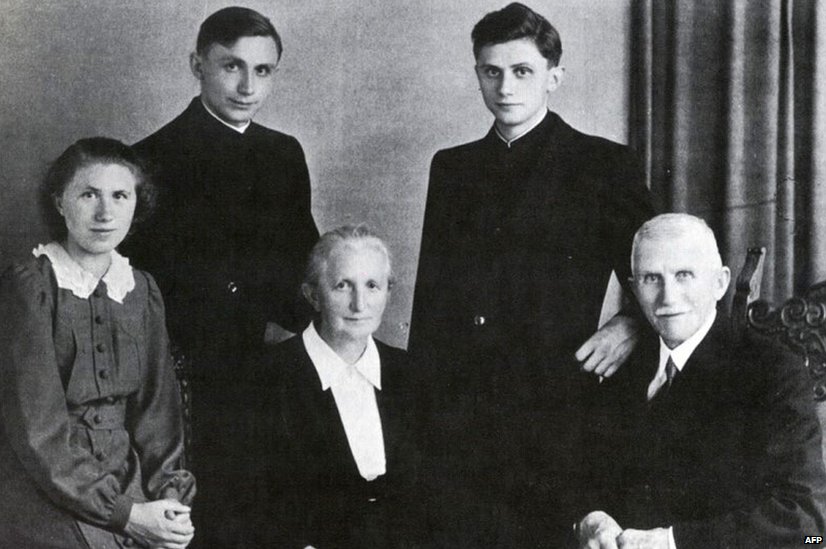
 “With an eye to his retirement, my father bought an old, likewise very simple farmhouse in Hufschlag near Traunstein. Instead of tap water, there was a well, which was very picturesque. On one side of the house there was an oak forest interspersed with beeches, on the other side were the mountains, and when we opened our eyes in the morning, the first thing we could see was the mountains. In the front we had apple trees, plum trees, and a lot of flowers that my mother had cultivated in the garden.” —Ibid.
“With an eye to his retirement, my father bought an old, likewise very simple farmhouse in Hufschlag near Traunstein. Instead of tap water, there was a well, which was very picturesque. On one side of the house there was an oak forest interspersed with beeches, on the other side were the mountains, and when we opened our eyes in the morning, the first thing we could see was the mountains. In the front we had apple trees, plum trees, and a lot of flowers that my mother had cultivated in the garden.” —Ibid. “When later Cardinal Faulhaber paid a visit to our region, with his imposing purple, he impressed me all the more, so that I said, I would like to become something like that.” —Ibid.
“When later Cardinal Faulhaber paid a visit to our region, with his imposing purple, he impressed me all the more, so that I said, I would like to become something like that.” —Ibid.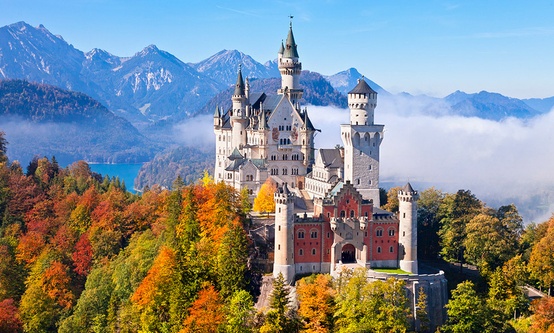
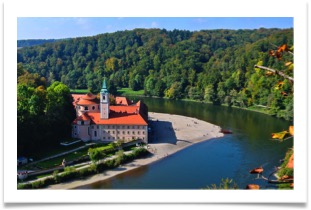





Facebook Comments